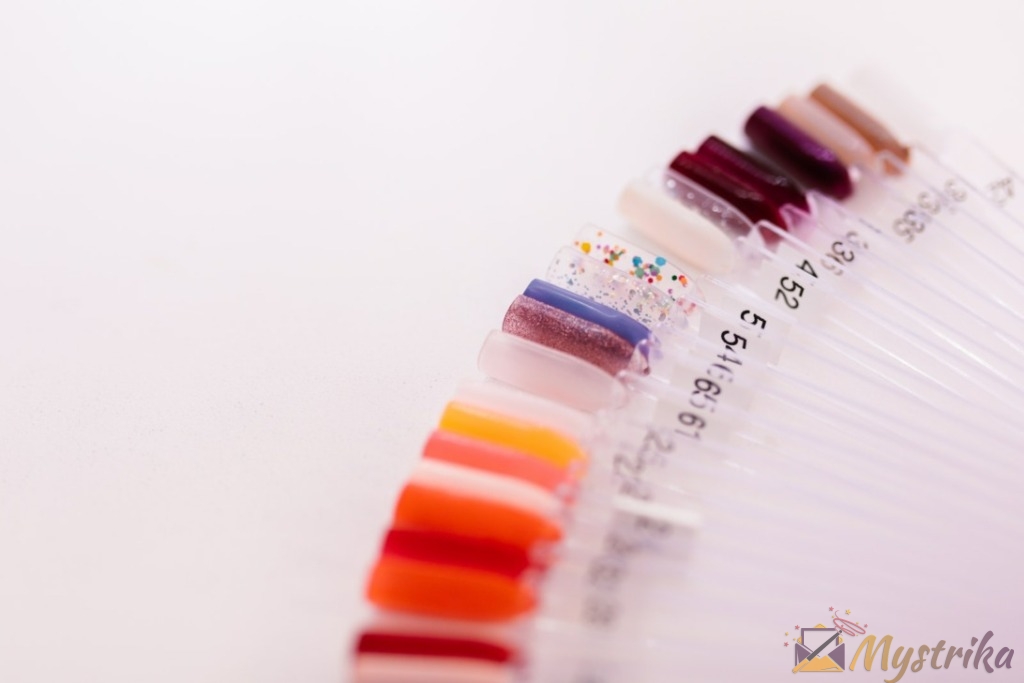Are you tired of sending out cold emails that seem to go nowhere? Do you feel like your message is getting lost in the sea of emails flooding your recipient’s inbox? It’s time to optimize your email body copy for cold email success.
To make the most impact with your cold emails, it’s important to understand your audience and their pain points. By crafting a clear and concise message, using a compelling subject line, personalizing your message and keeping the tone conversational, you can increase the likelihood of getting a response. In this article, we’ll go over tips on how to optimize your email body copy for maximum effectiveness so that you can finally break through the noise and get results. So let’s dive in!
Understand your audience and their pain points
Get to know who you’re communicating with and what problems they’re facing, so you can tailor your message to their needs and connect on a deeper level. Understanding customer pain points is the key to building relationships through cold emails. To do this effectively, try empathy mapping for cold emails.
Empathy mapping involves putting yourself in your customer’s shoes and thinking about their thoughts, feelings, and actions. This technique helps you understand your customer’s perspective so that you can create messaging that resonates with them. When you empathize with your audience, it shows that you care about their needs and are invested in helping them solve their problems.
By understanding your audience, you can craft a clear and concise message that speaks directly to their pain points. This will make it easier for them to see the value in what you have to offer. The goal is to create messaging that grabs their attention from the very beginning and keeps them engaged throughout the email. Crafting an effective email takes time but by taking the time upfront to understand your audience’s pain points, it will be much easier to write copy that connects with them on a deeper level.
Craft a clear and concise message
Crafting a message that is both direct and succinct can help your words resonate with potential recipients, capturing their attention and encouraging them to read on. Message clarity and concise wording are essential in cold emails since you only have a few seconds to make an impression. Avoid using jargon or technical language that may confuse the reader; instead, use simplified language that anyone can understand.
To craft a clear and concise message, consider these tips:
- Start with an attention-grabbing opening sentence.
- Keep sentences short and to the point.
- Use bullet points to highlight key information.
- End with a clear call-to-action that tells the recipient what you want them to do next.
Remember that your message should focus on how your product or service can help solve the recipient’s pain points. By keeping your language simple, you’ll ensure that even those who are not experts in your field can understand what you’re offering.
Use a compelling subject line to entice readers to open your email. A great subject line should be relevant, personalized, and create curiosity. By combining an engaging subject line with a clear and concise message body, you’ll increase the chances of getting responses from potential clients or customers.
Use a compelling subject line
When it comes to capturing the attention of potential recipients, crafting catchy subject lines is your key to standing out from the crowd and reeling them in like a fish on a hook. Your subject line is the first thing that people see when they receive an email from you, so it’s crucial that you make it engaging enough to convince them to click through and read more.
To create effective subject lines, try A/B testing different versions to see which ones get the best response rates. You can experiment with different lengths, styles, and tone of voice to find out what works best for your audience. You might also want to consider using personalization or humor in your subject lines, as these elements can help you stand out in a crowded inbox.
Remember that while crafting compelling subject lines is important, it’s just one part of optimizing your email body copy for cold email success. In the next section, we’ll look at how you can personalize your message to make sure that your emails feel relevant and valuable to each recipient. By combining effective subject lines with personalized messages, you’ll be well on your way to creating emails that get results.

Personalize your message
Let’s make your emails stand out and connect with your recipients by adding a personal touch to each message! Personalization tactics are crucial when it comes to cold emailing. Customization tips can help you make a great first impression, establish trust, and open the door for further communication.
To personalize your messages effectively, start by addressing the recipient by name. This shows that you have taken the time to research them and their company. Next, mention something specific about their business or industry that caught your attention. This not only demonstrates your knowledge but also shows that you’re genuinely interested in what they do.
Another way to personalize your message is by using language that resonates with the recipient’s values and preferences. For example, if they value innovation, use phrases like “cutting-edge” or “game-changing” in your email body copy. Similarly, if they prefer a more casual tone of conversation, try starting with a friendly greeting like “Hey there!” instead of “Dear Sir/Madam.”
Lastly, don’t forget to add a call-to-action (CTA) that aligns with the personalized message you’ve crafted. Whether it’s scheduling a call or meeting up for coffee, make sure it feels natural and relevant based on the context of your email.
By implementing these personalization tactics and customization tips into your email body copy, you’ll be well on your way to establishing meaningful connections with potential clients or partners. Keep reading to learn how keeping the tone conversational can help take things even further!
Now that we’ve covered some powerful personalization strategies for cold emails let’s look at how keeping things conversational can improve engagement rates!
Keep the tone conversational
Connecting with your recipients on a personal level is important, but keeping the tone conversational can truly make your message resonate and foster a genuine connection. The tone of your email sets the stage for how your recipient will receive and respond to what you’re saying. If your tone is too formal or stiff, it can create a barrier between you and your prospect. However, if you use an informal and conversational tone, you can build rapport quickly.
The importance of tone cannot be overstated when it comes to cold email success. Your message needs to feel like it’s coming from one person to another, rather than a generic marketing blast sent out to thousands of people. By using language that’s approachable and friendly, you create an atmosphere that encourages open communication and helps establish trust. This is especially important in cold emails since most recipients are wary of being sold something they don’t need.
Building rapport through conversationally toned emails requires some effort on your part as the sender. You need to strike a balance between sounding professional yet relatable – not an easy task! But by taking the time to craft messages that sound like they’re coming from someone who genuinely cares about their audience, you’ll increase the chances of getting responses from prospects who are interested in hearing more from you.
When it comes to optimizing email body copy for cold email success, keeping things conversational is key. In our next section, we’ll explore how using bullet points and short paragraphs can help make your message even more effective at reaching its intended audience without overwhelming them with information overload.
Use bullet points and short paragraphs
To make your message more reader-friendly and less overwhelming, use bullet points and short paragraphs in this section – it’ll help you get your point across quickly and effectively. Visual aids like bullet points can break up large blocks of text, making the content look less intimidating to read. When using bullet points, remember to keep them brief, but informative.
Here are some formatting techniques for better email readability:
- Use subheadings to organize your message
- Bold important information so it stands out
- Add white space between paragraphs to give readers a break
- Stick with one font throughout the email to avoid confusion
The psychology of bullet points in email communication is fascinating – people are naturally drawn to lists because they’re easier on the eyes and brain than long-form text. By breaking down complex ideas into bite-sized pieces, you’re helping your reader process information more efficiently.
Highlighting the benefits of your product or service is crucial in any cold email campaign, but first impressions matter just as much. By using visual aids like bullet points, you not only improve readability but also increase engagement by keeping readers interested in what you have to say. Remember: when it comes to effective email communication, simplicity always wins over complexity!

Highlight the benefits of your product/service
Highlighting how your product or service can benefit the reader is essential in crafting a captivating email that keeps them engaged and interested. To achieve this, you need to showcase your product benefits effectively. One effective way to do this is by conducting customer pain point analysis. This will help you understand what your target audience wants and needs, allowing you to tailor your email content to address these concerns.
When highlighting the benefits of your product or service, it’s important to focus on what sets you apart from competitors. What unique value proposition does your brand offer? How can you solve a problem that other companies cannot? Highlighting these points in your email body copy will make it more appealing to potential customers.
Incorporating social proof and testimonials is another effective way of showcasing the benefits of your products or services. People are more likely to trust recommendations from others who have had positive experiences with a company than they are with claims made by the brand itself. Including quotes from satisfied customers in your email can help build credibility and encourage prospects to take action towards making a purchase decision.
By highlighting the benefits of your product/service, focusing on unique value propositions, and incorporating social proof through testimonials, you increase the likelihood of success for cold emails. When crafted effectively, these emails become powerful tools for generating leads and driving sales without being pushy or aggressive in approach. Keep these tips in mind as you continue optimizing future email campaigns!
Use social proof and testimonials
You can boost your credibility and encourage potential customers to take action by incorporating social proof and testimonials in your email. Building trust is essential when it comes to cold emailing, and one of the most effective ways to do this is by providing evidence that other people have had positive experiences with your product or service. Here are some social proof techniques you can use:
- Customer testimonials: Including quotes from satisfied customers who have used your product or service can be a powerful way to build trust with new prospects.
- Case studies: Sharing real-life examples of how your product or service has helped others achieve their goals can be especially compelling for B2B audiences.
- Be sure to highlight specific metrics like ROI, increased revenue, or time saved.
By using social proof in your emails, you can help ease potential customers’ concerns about taking a chance on something new. It’s important to remember that people are more likely to believe what others say about you than what you say about yourself.
When crafting your email, try incorporating one or two social proof elements near the beginning of the message. This will help grab readers’ attention and keep them engaged throughout the rest of the email. Once you’ve established credibility through social proof, it’s critical to include a clear call-to-action that encourages readers to take the next step – whether that’s scheduling a demo, signing up for a trial, or simply responding with questions. By combining these tactics, you’ll be well on your way toward creating effective cold emails that get results.
Include a clear call-to-action
Get ready to seal the deal by adding a crystal-clear call-to-action that will take your prospects from interested readers to eager customers. Your email body copy should always include a clear and concise action that you want your prospect to take. Without it, your email may be just another one in their inbox that gets ignored. A call-to-action can be anything from scheduling a meeting, calling your sales team, or even just replying to the email.
Creating urgency is a great way to get your prospect’s attention and motivate them to take action. By offering something of value for a limited time, such as an exclusive discount or free trial, you can create a sense of urgency that can ultimately lead to conversion. Remember to highlight the benefits of what you are offering and how it will positively impact their business.
Providing value is also crucial when creating your call-to-action. You want your prospect to feel like they will benefit from taking action on what you are proposing. Make sure you clearly communicate how your product or service will solve their pain points and improve their business operations. When done correctly, providing value combined with creating urgency can result in higher response rates and ultimately more sales for your business.
With a clear call-to-action that provides both value and urgency, you have set yourself up for success in cold emailing. In the next section, we’ll explore how using urgency and scarcity can create a sense of FOMO (fear-of-missing-out) that leads to even higher response rates from prospects who don’t want to miss out on an opportunity.
Use urgency and scarcity to create a sense of FOMO
You’re about to learn how urgency and scarcity can create a sense of FOMO that will have your prospects scrambling to take action in order not to miss out on an incredible opportunity. FOMO tactics in cold emails work because they tap into our natural fear of missing out. By using language that implies limited availability, you can create a sense of urgency that compels the reader to act quickly.
Creating a sense of urgency in email marketing doesn’t mean bombarding your prospects with spammy messages every day. Instead, it’s about crafting a well-written email that conveys the importance of acting now rather than later. One way to do this is by highlighting the benefits of taking action immediately, such as access to exclusive deals or limited-time offers.
By incorporating FOMO tactics in cold emails, you’ll be able to capture your prospect’s attention and keep them engaged throughout the sales process. Remember to keep your message brief and focused on the benefits for the reader. Doing so will increase your chances of converting leads into customers. Now, let’s dive into how keeping your email brief and to the point can help boost open rates and drive conversions even further!
Keep your email brief and to the point
Ready to learn how to make your emails more effective? In this section, we’ll explore the power of brevity and how keeping your message short and sweet can help boost engagement and drive conversions. When it comes to cold emailing, you only have a few seconds to capture someone’s attention. This means that your email length should be concise enough for someone to read through it quickly but still impactful enough for them to take action.
To keep your emails brief, start by focusing on one main point that you want to convey. Avoid going off on tangents or including unnecessary details that could distract from your message. Additionally, use impactful language that is clear and easy to understand. This will help keep readers engaged and prevent them from losing interest before they reach the end of your email.
By keeping your emails short and sweet, you’re also respecting the reader’s attention span. People are bombarded with information every day, so the last thing they want is another long-winded email that takes up too much of their time. Instead, aim for conciseness in both your writing style and messaging. This will not only improve engagement rates but also increase the likelihood that recipients will respond positively.
Remember: brevity is key when it comes to cold emailing success! To further enhance the impact of your messages, consider using a professional email signature as well. This simple addition can add an extra layer of credibility to your brand while providing recipients with all pertinent contact information at a glance.

Use a professional email signature
Make a lasting impression on your recipient by adding a professional email signature that includes all your necessary contact information, giving them an easy way to get in touch with you. Email signature design is crucial when it comes to creating a strong brand identity for your business. It’s important to utilize this space as an opportunity to showcase your logo, website, and social media links.
In addition to branding, including essential details like your name, job title, phone number and email address helps establish credibility with the recipient. This information also makes it easier for them to follow up or reach out if they have any questions or concerns about your offering. A professional email signature not only communicates reliability but also reflects positively on the overall quality of the communication.
Importance of branding in email communication cannot be overstated because every aspect of communication is an opportunity to create and reinforce brand recognition. By being consistent across all channels – from social media profiles to email signatures – you can develop trust and familiarity with prospective customers. Remember that attention spans are short so make sure your message is clear, concise and engaging while tying back into the overall tone of your brand’s voice.
By incorporating a professional email signature into each cold outreach message you send out, you are making yourself more approachable and trustworthy as well as setting yourself apart from competitors who might not take this step. However, beware of using trigger words that could land you in spam folders instead of potential customer’s inboxes!
Avoid spam trigger words
If you want your cold emails to be successful, there are several things you need to consider. In the previous subtopic, we talked about using a professional email signature, which is essential for making a good first impression. However, even with a great signature, your email might still end up in the spam folder if you use certain trigger words.
Spam trigger words are those that email filters flag as suspicious or potentially dangerous. Using them can make it more likely that your message will get marked as spam and never seen by your intended recipient. Some examples of these words include “free,” “earn money fast,” and “act now.” Instead of using these phrases, try to find alternative ways to convey your message without triggering spam filters.
To avoid having your emails marked as spam, it’s also important to know how to check whether they’re likely to end up in someone’s junk folder. There are several online tools available that can analyze your email content and give you feedback on its likelihood of being flagged as spam. By taking advantage of these resources, you can ensure that your messages are more likely to reach their intended recipients.
By avoiding spam trigger words and checking whether your emails are likely to be flagged as junk mail, you’ll increase the chances of getting responses from potential clients or customers. But even with these precautions in place, it’s still important to test different variations of your email body copy to see what works best. In the next section, we’ll discuss how you can do just that.

Test different email variations
In order to find the perfect balance and increase your chances of receiving a response, it’s crucial to experiment with various email variations like a scientist mixing chemicals, testing and tweaking until you find that winning formula. This is where A/B testing strategies come into play. By sending out different versions of your email to a small group of recipients, you can measure success metrics such as open rates, click-through rates and reply rates.
Once you have tested different variations, analyze the results and optimize accordingly. If one version consistently outperforms the others, then use that as your template moving forward. However, don’t be afraid to continue experimenting with new ideas in order to keep improving your cold email copy.
Remember that there is no one-size-fits-all solution when it comes to optimizing email body copy for cold email success. It’s important to stay creative and flexible in your approach while keeping track of what works best for your specific audience. With consistent testing and optimization efforts, you can develop an effective cold emailing strategy that yields positive results for your business or organization.
Analyze and optimize your email performance
In the previous subtopic, we discussed the importance of testing different variations of your cold email. Now that you have tested a few versions, it’s time to analyze and optimize their performance. This involves looking at metrics like open rates, click-through rates, and response rates. By doing so, you can determine which emails are performing well and which need improvement.
One way to improve your email performance is by using email copywriting techniques. These include writing attention-grabbing subject lines, personalizing the message for your recipient, and using persuasive language that resonates with them. Another important aspect of email optimization is A/B testing strategies. This involves sending two slightly different versions of an email to a small group of recipients and then measuring their responses. The version that performs better can then be sent to the rest of your list.
By continuously analyzing and optimizing your cold email campaigns using these techniques, you can increase your chances of success and ultimately achieve your desired outcomes. Remember to keep track of what works best for you and always be willing to experiment with new ideas. With these tactics in mind, you’ll be well on your way to crafting effective cold emails that get results without sacrificing freedom or flexibility in how you communicate with potential clients or partners!
Conclusion
Congratulations, you’ve just learned how to optimize your email body copy for cold email success! By understanding your audience’s pain points and crafting clear, concise messages with compelling subject lines, you’ll be able to capture their attention and ultimately convert them into customers. Personalization is key, so make sure to address each recipient by name and keep the tone conversational.
Don’t forget about the importance of a professional signature and avoiding spam trigger words that could land your message in the dreaded junk folder. Testing different variations of your email will help you analyze performance and make necessary adjustments for future campaigns. Remember, Rome wasn’t built in a day – it takes time and effort to perfect your cold emailing strategy.
As they say, “Rome wasn’t built in a day” – meaning that success doesn’t happen overnight. But with patience, persistence, and these tips on optimizing your email body copy for cold emailing success, you’re well on your way to building a strong foundation for successful outreach campaigns. Keep experimenting with different tactics until you find what works best for your target audience and business goals. Happy emailing!

